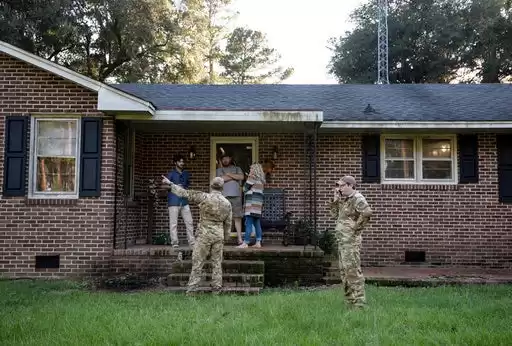Pilot of downed F-35 fighter jet parachutes into residential backyard
The pilot of a $100 million stealth fighter jet parachuted safely into the backyard of a home in South Carolina after a malfunction forced him to eject from the aircraft, causing the plane to crash into a wooded area about 60 miles away.
In a surprising turn of events, the pilot of a state-of-the-art stealth fighter jet was forced to eject from the aircraft and parachuted safely into a residential backyard in South Carolina. The malfunction caused the plane to crash into a wooded area about 60 miles away. The aircraft, which was worth $100 million, was not discovered until the following day by a state law enforcement helicopter. Fortunately, the pilot did not sustain serious injuries and has since been discharged from the hospital.
According to a U.S. Marine Corps official, the pilot, who remains unidentified, reported losing control of the plane due to weather conditions. The incident occurred during a routine training flight, and the pilot was forced to eject at an altitude of approximately 1000 feet, just north of Charleston International Airport. The Marine Corps official described the debris field left by the crash as "extensive," prompting officials to close a one-mile stretch of road indefinitely while they search for wreckage.
The search efforts have involved federal, state, and local officials, with the military also reaching out to the public for assistance. The F-35B Joint Strike Fighter is designed to evade detection, making it difficult to locate. The Marine Corps confirmed that another F-35 returned safely to the base after the incident.
In the event of an aviation incident involving multiple aircraft, it is standard procedure for the remaining aircraft to remain in the area to ensure the safety of the pilot and relay information about the crash location. The F-35 Joint Strike Fighter comes in three variants, with the F-35B being the Marine Corps' version capable of vertical takeoff and landing. Each variant is equipped with an ejection seat, and the Marine Corps' variant has a specialized seat that can auto eject during hover mode.
According to Jeremy Huggins, a spokesperson at Joint Base Charleston, the pilot ejected from the aircraft while it was in autopilot mode. Huggins explained that the F-35's unique coatings and designs make it more difficult to detect than a normal aircraft. However, the jet's transponder was not functioning at the time of the incident.
The F-35 program is the most expensive weapon system in the U.S. Department of Defense, with the engine in need of modernization. The excessive heat generated by the engine is causing wear and reducing its lifespan, resulting in an additional $38 billion in maintenance costs, according to a report from the U.S. Government Accountability Office.
In response to the recent mishap, the Marine Corps has announced a two-day pause in aviation operations to reinforce safe flying policies and procedures. This decision comes after three "Class-A mishaps" occurred within the past six weeks, which involve damages exceeding $2.5 million, the destruction of a Department of Defense aircraft, or death or permanent disability.
While details of the previous incidents were not provided, the recent crash serves as a reminder of the risks involved in military aviation. The investigation into the cause of the crash is ongoing, and commanders are taking this opportunity to prioritize the safety of their Marines.











Comments on Pilot of downed F-35 fighter jet parachutes into residential backyard